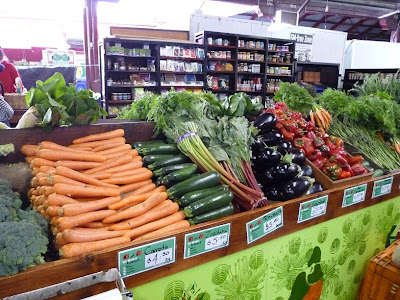
Anyway (and yes, I really do remember all of this, even now, no visit to youtube necessary) one of his songs was “Chish and Fips” and the basic premise of the song was that there were these five guys, tall and lean (you could say string beans), whose names were Chish and Fips and Rossage Solls, Somato Tauce and Riko Cholls. And essentially, every Sunday, these thin, tall chaps go to a shop to buy fish and chips and sausage rolls with tomato sauce, and a chiko roll*. All in a catchy twelve bar blues minor key.
This is important, because I cannot ever think of sausage rolls without the riff from this song going through my head. My father, I think, cannot even say the words ‘sausage rolls’ any longer: any mention at all will have him say “Chish and Fips” (I don’t even know if he realises he does this, it is that ingrained).
Ever since I decided to make sausage rolls to take to the football this Saturday I have been driven insane by this song playing on repeat in my head.
A pie and a sausage roll at the footy are a quintessentially Australian thing to do. Proverbially, you haven’t had a complete football experience unless you have consumed at least 1 cold pie, 1 lukewarm but soggy sausage roll and 1 warm light beer whilst watching your team lose in the rain. The whole experience must cost more than a night at the opera. This is fun.
Wanting to capture this important cultural ethos without suffering the all too common culinary pain, I decided to pack a picnic to take to the pre-season practice match between Melbourne and Essendon on Saturday afternoon.** The thing about my home-made sausage rolls is that they taste better cold than hot (I’ve never worked out why this is), are deliciously packed with vegetables (a bit like a Cornish pasty) and cost as much to make 1 ½ kgs of sausage rolls as a single sausage roll will cost to buy at the ground. Plus, I have a little tub of onion jam left over that will be just the thing.
The weather forecast: showers.
* I have never eaten a chiko roll. A chiko roll is made of boned mutton, cabbage, rice, barley, celery, carrot (and possibly corn??) and spices in an edible tube which is deep-fried. I understand they are uniquely an Australian experience, but so are many poisonous snakes, so don’t get excited.
** FYI: Essendon 18.12: 120 beat Melbourne 11.14: 80
2 large carrots, grated
2 medium zucchini, grated
2 onions, grated or finely minced
1 ½ tbsp dried mixed herbs (and whatever fresh herbs you have going – I like rosemary and parsley)
1 tsp paprika
1 egg
Pepper, to taste
Six sheet frozen puff or shortcrust pastry, thawed.
1 egg, beaten with a dash of cold water (to glaze).
Preheat an oven to 200ºC. Line several baking trays with baking paper.
In a large bowl, using your hands, squelch together the sausage mince, vegetables, herbs and beaten eggs.
Slice each sheet of pastry in half. Brush edges with egg.
Form the sausage mixture into long logs and place down the centre of each strip of pastry. Wrap the pastry around and pinch and fold over to seal. Piece the sausage roll with a fork at regular intervals. (At this point the uncooked sausage rolls can be frozen.)




















.JPG)
.JPG)

.JPG)



